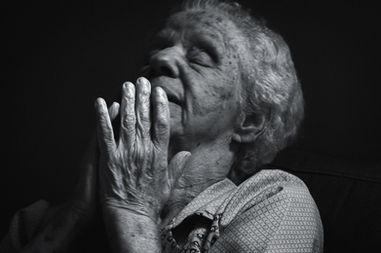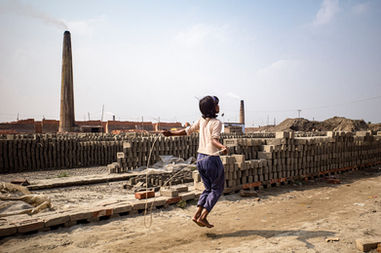
SHALL WE DANCE
September 11, 2020
PICTORIAL STORY
Photography by Shawn Byron Danker
Story by Karin Svadlenak Gomez
Shawn Byron Danker is a Singapore based photographer and photojournalist. In this ongoing collaborative project, Shawn visits performers across modern, classical, and urban dance genres in various cities to celebrate, question, and juxtapose the nature of the global city with dance. His layered compositions are no mere celebration of the beauty of the body in motion, the cityscape no mere contextless backdrop, no mere showcase of a single dance form. They are a mesh of genres whose complexity and wit enables audiences to discern and appreciate movement, shapes, patterns, and background in a given context.
-min.jpg)
In 1937 Fred Astaire and Ginger Rogers tap-danced across the silver screen to music by George and Ira Gershwin in Shall We Dance, the seventh of the famous Astaire-Rogers musical comedy films. In his films, Astaire often danced in everyday settings and used ordinary items as props, most often indoors but sometimes in outdoor settings too. He probably would have been appreciative of the way dance evolved from the ballroom out into the street.
But Shawn's title inspiration actually comes from another film by the same name, the Japanese 1996 comedy Shall we dansu? “The female lead was why I fell in love with dance as a kid,” Shawn told us.
Modern dance involves many different categories and styles. The umbrella term street dance refers to all dance styles that evolved outside dance studios, in open (though not necessarily outdoor) spaces, including of course in the streets, but also parks, schools, and even nightclubs and private party settings. Generally, though there is a heavy emphasis on urban settings. Contact among dancers and spectators is often a given, and styles tend to evolve from particular social settings. The most famous style that is universally known is the highly athletic and powerful break dance (“b-boying” and “breaking”, as the dancers call it), which was developed by African American youths in the US urban spaces of the 1970s and, popularised in several 1980s films, from there spread around the world. There is a bewildering variety of street and vernacular dance styles nowadays, such as krumping, popping, contact contemporary, variations on jazz dance, and many more.
But dancing in the streets is not limited to typical 'street styles'. Shawn has made it his mission to take all types of dance, even classical ballet, out into the urban jungle. In his photos, even pole dancing has made it out of strip clubs and (more recently) fitness studios into the streets and onto urban poles such as those upholding traffic signs. Shawn spends much time thinking about suitable locations and makes the setting part of the dance. Rather than blurring the background, he purposely works with it. “What is the point of taking the dancers outdoors if your backgrounds are not going to matter in the shots?” he asks. So he shoots his dance scenes with a relatively open aperture of F4. A part of his art direction is that the location should have meaning, help set the mood, and reveal character. The space around the dancer should enhance their presence and impart a richer meaning to the frame. Shawn uses a lot of film theory when scouting locations and planning his shoots. He looks for anything that helps to build an engaging mise-en-scène. This may include the quality of light and shadows, the colours, and most importantly the shapes that the structures impart to the scene. Sometimes it can take him years to finally figure out how to best use a location for maximum visual impact.
Shawn also tells the dancers that they’re not dancing in a vacuum, that they should be using their bodies to tell a story about how the scene makes them feel. When he initially set out to shoot contemporary dance he found himself with a particular conundrum: Most general audiences with no dance training, himself included, find it difficult to understand what they are watching. But people do not seem to have problems understanding shapes and figures. So he decided to showcase contemporary dance by telling the dancers he photographs to be as statuesque as possible with their gestures.
For example, one day when he noticed the architecture of the corridor in one of Singapore's oldest public housing buildings created a spectacular light show, Shawn decided to try to bring the scene to life. He experimented with it for a few years until he got the shot that he wanted with Hwa Wei-An. “It was quite difficult to find a day when the dancer's availability matched up with the right weather conditions. The spiral you see here was inspired by tai chi,” he jokes. He shot this with a slight camera movement technique to create a pronounced spiral effect.
In general Shawn prefers to give only vague directions and lets the dancers decide what moves they want to make but discusses with them beforehand the story he would like the pictures to tell. “When I started on this series, I used to come into the shoots with a preconceived move I’d want the dancer to do for the shot. But I slowly began to realise that the best shots I ever got was when I let the dancer freestyle their moves.”
Shawn uses different dance genres to create different moods. Even though ballet is the most widely photographed dance genre today, Shawn goes out of his way to document the genre as well. He does this because he wants his dance body of work to be as diverse as possible. For ballet he looks for locations that position an edgy environment against the ballet dancer’s “etherealness”; soft versus hard.
When you think of ballet, the image of the genre that comes to mind is often either dancers performing on stage in a theatre or in a studio setting. Ballet dancers usually do not battle or jam. That’s what street dancers do. But Shawn decided to take three ballet dancers, Jemma Braun, Rab Flanigan and Ethan Slocomb, and tell them he wanted to see them jam with one another and “battle” each other, all while having fun. Someone mentioned that this little jam felt like watching a real life West Side Story. “I guess that’s what it might look like when ballet dancers take a page out of the street dancers' playbook and head out to the streets and battle to push each other to be better dancers,” he says.
Graffiti can be very tricky to work with. Shawn has always opted to try to be clever with murals by either making the subject look like they're a part of the painted scene or compose it so there is some kind of contrast. This takes a keen understanding of how light and negative space work. Place the subject wrongly and they disrupt the balance of the mural and end up looking flat and two-dimensional. Do it right and you’ve got beauty in your hands.
The quintessential dance that comes to most people's mind when thinking of street dance is of course breaking, and Shawn has worked with a number of dancers showcasing this style. One of his frequent collaborators is legendary B-boy Sonic, Daniel Sonic Rojas, who is also the creator of a style he calls Embodied Dance Movement, using body mechanics to find the rhythm in all movements, and a master of what he calls contemporary break: a fusion of contemporary dance and break.
Thanks to his love of Kurosawa, Shawn always tries to incorporate some kind of motion within his scenes. “I am shooting movement after all so there should always be some sense of kinetics within my frames,” he says. It can be through actual movements or the implication of movement via gestures.
Shawn brings all the Melbourne dancers he works with to a particular narrow lane because he is planning to create a mosaic as an anchor piece for the Australian version of the Shall We Dance exhibition; it would be entitled We are Australia and is intended to celebrate the country’s diversity. He also uses the narrow space as a mental exercise to stimulate the dancers' creativity. Constricting their space forces them to take stock of their abilities and come out with something that pushes them to another level. Some experienced dancers have surprisingly struggled there.
The “coke-bottle” dance was another shot that took years to create, six to be exact: five to find this place with the coke bottle mural, and one more to finally use the location in Shawn's mise-en-scene, because the coke bottle was covered in tags the year he found it. They were driving by this particular spot the morning of a planned photo shoot when Shawn noticed the bottle had been cleaned up and decided he wasn’t going to pass up the opportunity to finally use the spot.
Shawn's first pole dance themed dance shoot was five years in the making. Pole dance fascinates Shawn because of the amount of sheer physicality involved in what the dancers do when they work their magic. “The goal with pole dance for me is to break the negative stereotypical association with strip clubs.” But it is also the most difficult for him to shoot logistically because he needs to find the right 'pole' in the right location with the right light. But when it all comes together there is magic.
To the viewer, shots like the two below must also seem like magic. They are actually multiple exposures composited into one frame. Shawn does not do too many of those, as it requires working with a tripod, which he finds very cumbersome. “Tripods are tricky because once you set one down in public security pounces on you even if you're not in anyone's way.” The effect of such a composite image is however, quite wonderful, as, rather than showing an instant in a dancer's motion it can convey almost the entire sequence.
Shawn had only one try to get a series of shots of contemporary dancer Azusa Fukushima at Tokyo's Nishirokugo Park within one take. The park warden had come over to them to politely point out that the tripod Shawn had set up was not permitted in the park. “After we were done with the shot, that little boy in green kept following Azusa around like a puppy. I think he was experiencing his first crush after watching her dance,” Shawn chuckles.

Shawn's dance photography project continues, and so we shall have to watch his page again for future awesome dance shots from time to time.
Cover image: Kevin Scott Watson (@kevinscottwatson) and Lauren Watkins (@lauren___watkins) in Ginza, Tokyo.
Middle image: Jessica Angelique Gabrielli (@jagiroha_movement) dances a fusion of performance art, belly dance and contemporary in Hosier Lane in Melbourne. A local passerby remarked that an angel had descended upon Hosier Lane when she saw them working.
Footer image: Hafeez Hassan (@hafeezhassn) is paying tribute to Michael Jackson in this choreography in Singapore, which Shawn put together as a composite of multiple images.

The views, thoughts, and opinions expressed in the text belong solely to the author/s, and are not necessarily shared by The Pictorial List and the team.











































